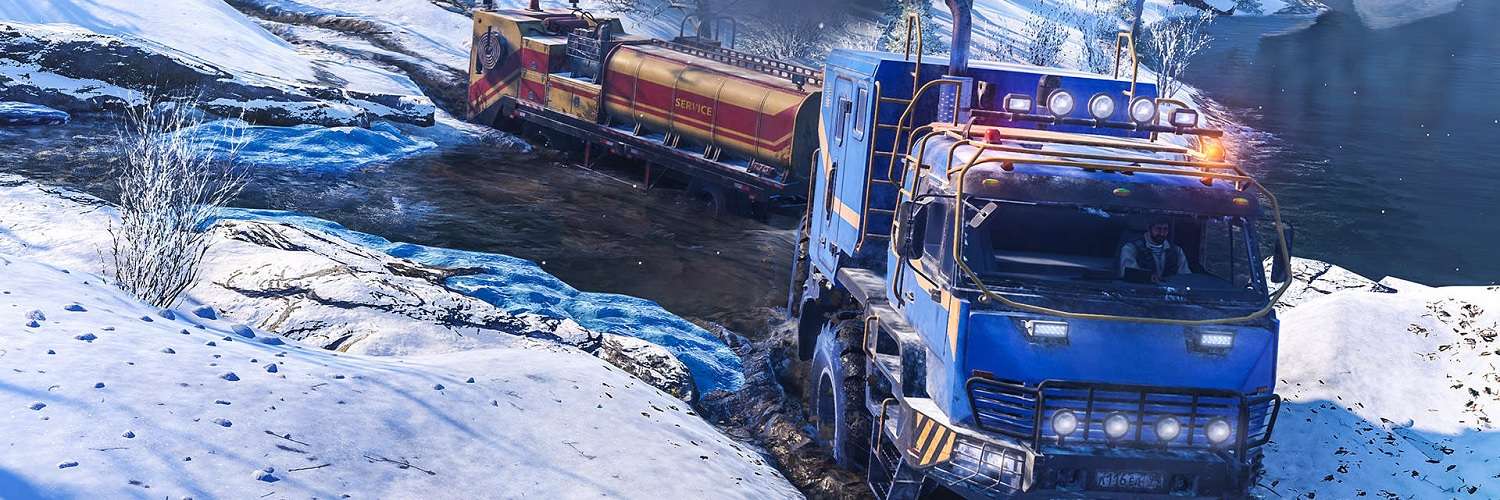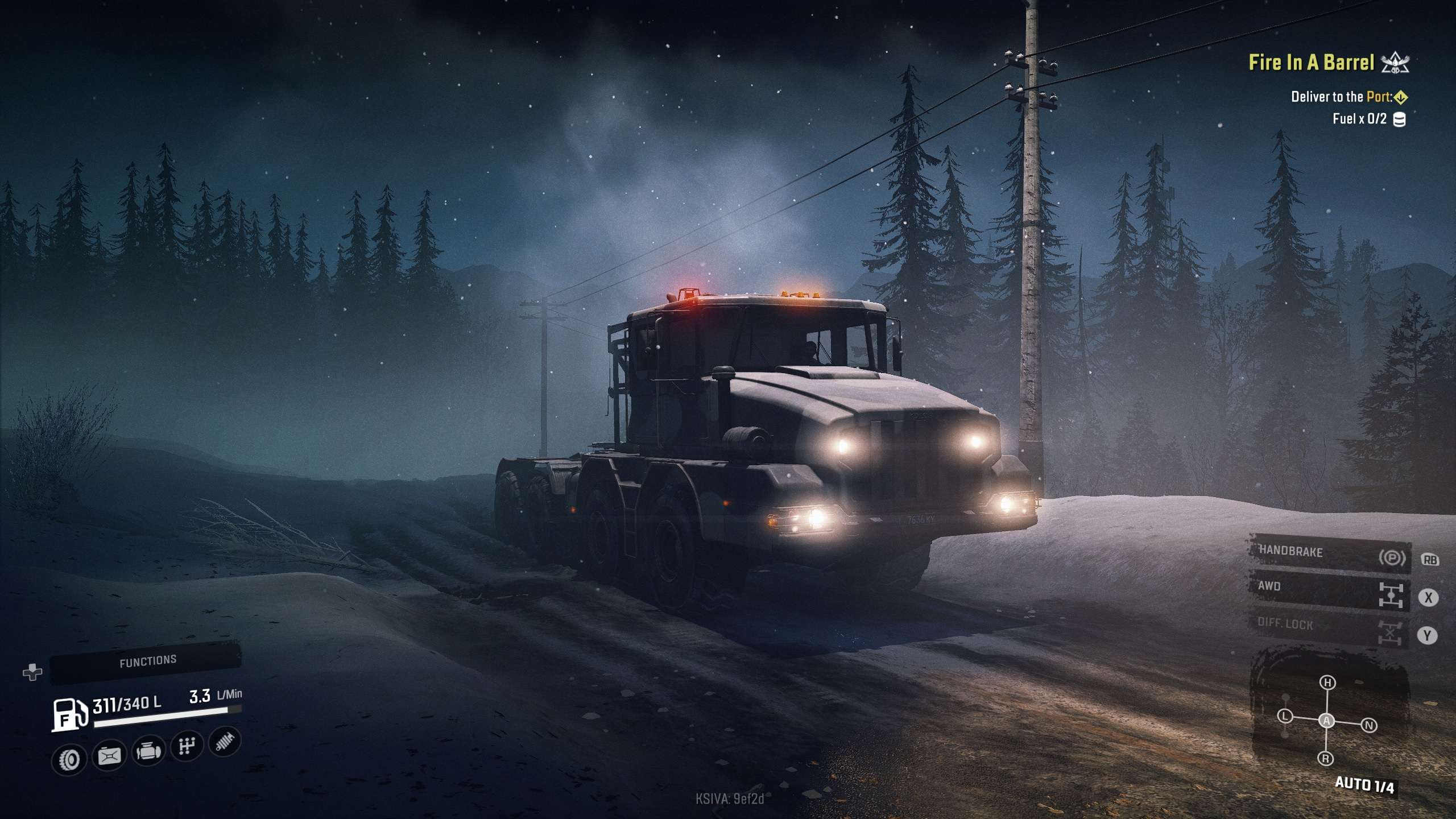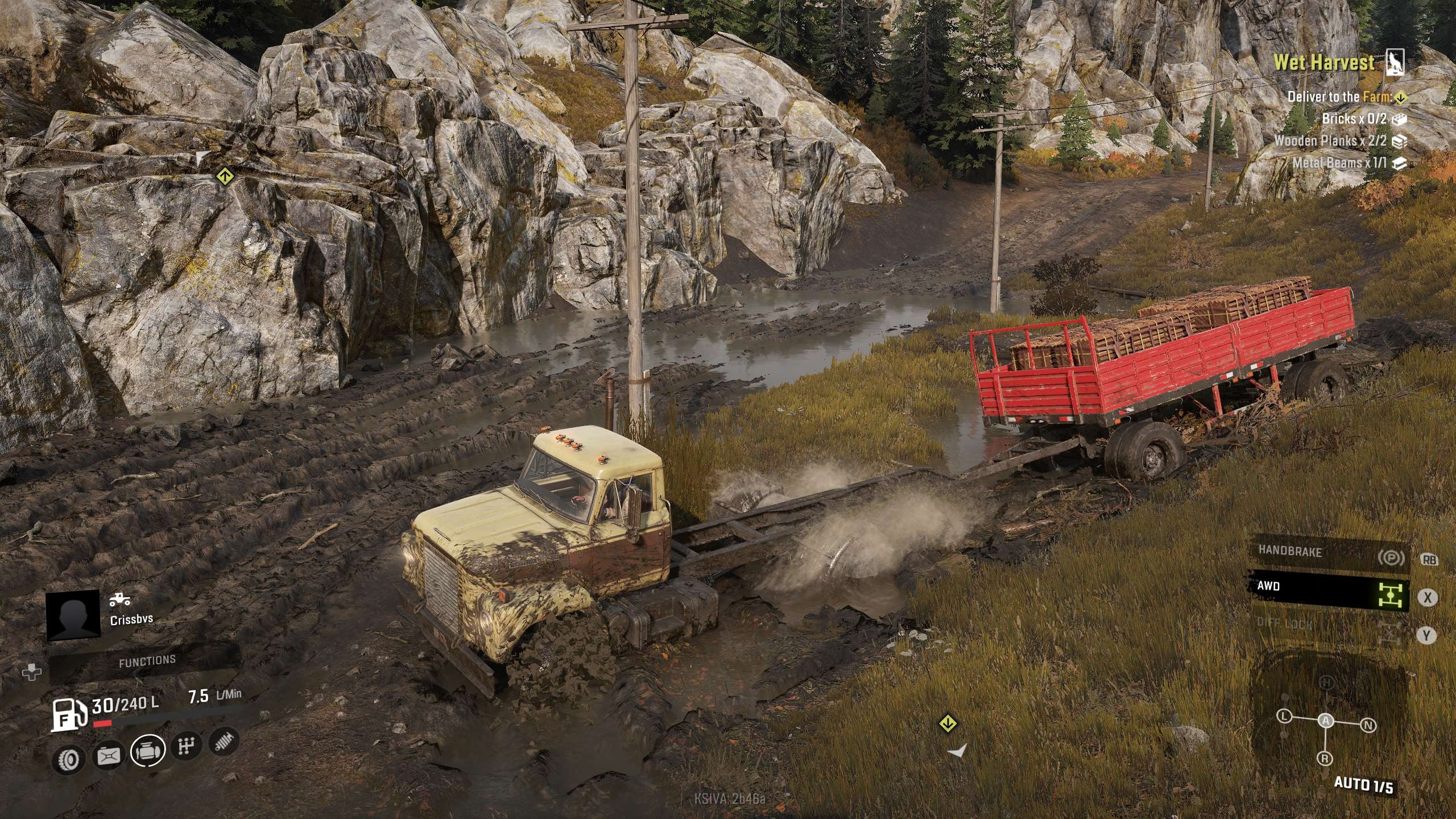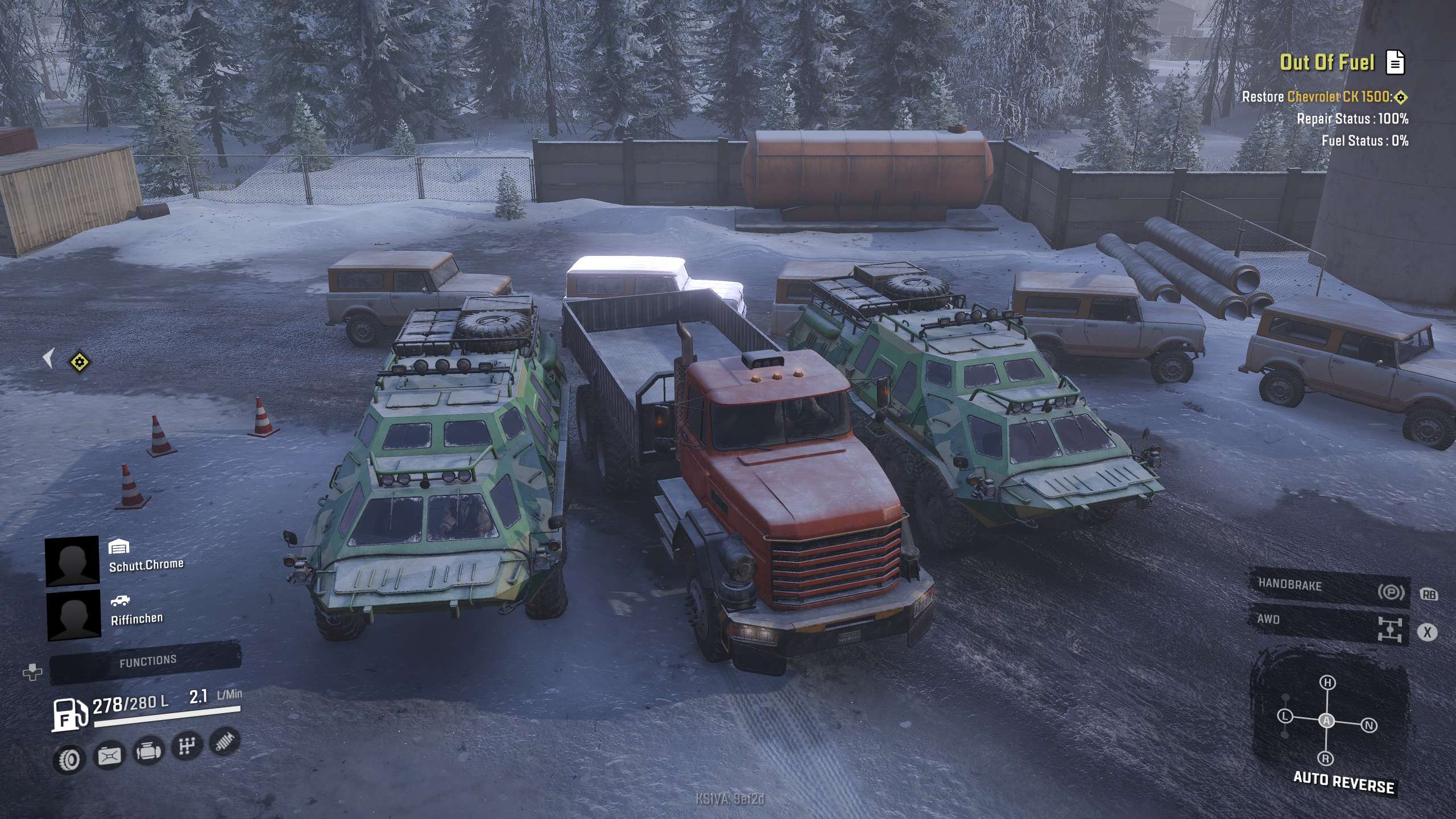
SnowRunner PC Review
I do not think a game has made me more terrified of terrain than Saber Interactive’s sequel to MudRunner, SnowRunner. I was given a simple objective, dubbed “Local Entertainment”, from a group of factory workers to find five barrels placed around the hilly areas of Black River, Michigan, the starting area of SnowRunner. What proceeded was about 30 minutes of excitement, frustration, despair, shock and finally the feeling of accomplishment as my poor International Scout 800 eventually made it to the final fifth barrel on the edge of a rock hillside. This was only after having situations where my vehicle had flipped over and stalled, slipped down a stream and stalled, got stuck in mud and couldn’t winch out, fell off a rocky side and became stuck upside down, with the only options to either reset back to my garage or jump to another vehicle to help my poor little Scout 800 out of trouble. SnowRunner is a game where even the tiniest lack of concentration can send your vehicle to the shadow realm, becoming lost to the depths of the dangerous world of nature, yet every time this happened, I wanted to get back to the wheel for more hazardous exploration.
From start up, the game throws the player straight into the tutorial in a dirty, forest area of Michigan. There is no story, no real setup, as the rather short tutorial begins to introduce the features of SnowRunner through pop-ups as the game takes the player through the first task to complete. The design of SnowRunner delivers open world areas for each of the game’s three regions – Michigan, Alaska and Taymyr – and these are split into four large areas connected through a tunnel. Some of the key functions of the game are demonstrated through the tutorial. It will go through the importance of finding watchtowers – yes, these work exactly like Ubisoft’s implementation – drive a vehicle up to tower and press a button to reveal parts of the map, which is more handy than it might sound in a driving game, due to the reveal of hidden upgrades, side missions, trailers and vehicles placed around the tricky terrain. The latter can be retrieved back to working order for use.

The tutorial then pushes the player to finish the first contract job offer. This is to help repair a bridge to gain access to the garage, a place where all the player’s vehicles can be stored. After this point, the game leaves it all to the player. The open world nature of SnowRunner quickly reveals that the environment is not your friend. This is demonstrated within the first couple of hours, in which the small Scout 800 and GMC MH9500, some of the first vehicles the player comes into contact with, are not the best to get around the difficult terrain of Michigan. These are vehicles suited for tarmac and the bare minimum off-roading, and it will not be long until they are stuck in mud or are flipped over due to unforeseen hazards.
At this point, the options become limited, do you jump to another vehicle and drive to the incident and winch the stuck vehicle out of trouble or do you simply teleport the vehicle back to base and then travel all the way back to the area where the incident happened. Either way, both involve a lot of driving, and from experience, it can end up with the second vehicle also getting stuck in another location. I am telling you now that this game can be unforgiving, and situations like the above can happen frequently that at times I felt the game was picking on me, it’s just that soul crushing after spending a good amount of time trying to reach a destination to have to do it again. In some sort of masochist way, I kept trying and I got there, more euphoria from doing a successful job rather than the experience and cash gained for finishing an objective.

Tools are available to help mitigate the environment’s willingness to make your vehicle immobile. To help move through rough terrain, the ability to switch to a low gear is an option for all vehicles. This reduces the speed of the vehicle, but allows more traction. As they say, “slow and steady wins the race”, although, there is no racing here, just a matter of having your vehicle’s life slowly sucked away as it succumbs to a muddy pit of incapacitated doom. Some vehicles have all-wheel drive as an option to switch on, or is constantly on, at the cost of burning more fuel. This does wonders when off-roading, as having more rotating wheels working on the ground helps find traction through even some of the most deepest of mud pits, but soggy bogs will cause wheels to slip. One of the last options for vehicles to feature is using differential lock to force the wheels to move at the same speed, rather than them working independently of each other and having different rotations due to the environment withholding the wheel’s ability to go at full spin.
All these are helpful, but without a doubt the best tool in the game is the ability to use a winch. This tool can be attached to various parts of the vehicle and then attached to an element of the environment to tow the vehicle from otherwise a slippy, sticky, situation. Making sure there is a winch point within range when attempting to drive over a harsh piece of land gives that security that it will be possible to get out if things go south. The winch can also be tied to another vehicle to be towed as well, or, in my case, used as a way to pull small trailers when I did not want to switch to a truck that was back at garage. While it is not quite as secure as a locked trailer, the winch does make pulling flatbed trailers rather amusing, as it wiggles around unrestricted. SnowRunner might seem harsh, almost like it enjoys punishing the player with its devilish terrain, but with good planning, careful pace and the mentioned tools available, the game can be tamed. It has to be almost treated like a puzzle game, with each task in the game looked at with the tools and vehicles that will be the best to solve the task.

And what are these puzzles that need solving? Well it is the game’s long list of contracts, tasks and challenges to finish, all tracked by regional statistics to see the completion rate for each region. Contracts are what I would class as the main objectives, and are all available to see in a list from the get go, but some are only available to attempt once other contracts have been completed. These are usually the longest jobs, often requiring multiple deliveries of various cargo, be it metal pipes, stone slabs, wooden planks, fuel, whatever they ask for, you need to bring to destination using trucks and their trailers to get there. These can even require moving to a different map location in that region, but never across the three mentioned regions featured in the game. Tasks are side missions, smaller objectives that can be helpful with exploration, such as delivering wooden planks to a bridge to repair it, enabling the use of said bridge as a way to shorten a journey, knocking over targets in hard to reach places, rescuing stranded vehicles and many more. Challenges are what the name implies, a list of jobs that are timed – the faster it is completed the more experience and money rewarded. What is interesting about these challenges is that they can also force modifiers into the game, such as having to finish the challenge driving in the cockpit. There is certainly no short of content here as this game will take plenty of hours to 100% each region.
On the surface, the idea of a game focused around a delivery driver might not sound all that exciting, and while Hideo Kojima added some spice to the postal guy concept with Death Stranding, SnowRunner is a bit more grounded in reality. That said, its personality is the dynamic environment, nature’s obstacles make the game more exciting to experience than the more standard delivery services seen in some of the Truck Simulator titles. It comes together to make a challenging, amusing bit of entertainment. It certainly is not for everyone, SnowRunner is a rather niche thing to try to sell to the standard person, but people willing to invest in SnowRunner will find it has something compelling to pull the player into its dirty gameplay.

The physics are mostly great, with the heavier vehicles coming across more accurate with their handling physics and how they interact with the world – seeing them spinning up the mud and water as they grunt the power through the wheels looks fantastic. A lot of work has gone into the visuals and physics to give them a realistic look, with deforming terrain, crumbling snow and gooey mud all behaving as one might aspect when driving through them. One issue I did find was with the smaller cars, the scouting class. Now I do not know if it is how the physics behave with weight, but they feel lighter and handle sketchy when travelling at speed, wanting to swerve off into a direction or loosing grip when turning a corner. These vehicles are fine when off-road, it seems more an issue with tarmac physics and their grip.
An experience and cash system is used to lock various vehicles and upgrades behind a progression wall. There are around 40 or so vehicles across multiple categories – Scout, Heavy Duty, Highway, Heavy, Offroad – and many upgrades, both performance and visual, can be bought with the cash earned. Performance upgrades make all the difference. I had a Heavy Duty truck with standard tyres on, which I eventually managed to switch up for some bigger inch off-road rubber that made it excellent for getting through some of the more rundown areas of Michigan. This was one of the first signs that switching around components of a vehicle helps dramatically, so it is not required to buy another expensive vehicle, which is something of an important life choice in the first few hours of the game where money is low.
A multiplayer session can be set up at any point in the game by simply clicking on start cooperative. This means any job can be completed by any of the, up to three other people, in your game world. Cooperative does have some shortcomings and problems. First off, only the host gains progression in objectives becoming completed – rest of the players simply earn the money and experience, but not the completion of the job. The biggest issue I have with the cooperative though is a glaring issue with communication with the other players. The developers seem to have forgotten about this, as there is no voice or text chat. When playing with friends, that is not a problem, as you can simply use a chat program to talk to each other, but when random people come into your world, such as the way I played cooperative, there is no way to chat, making it a isolating time. To be fair, the people who played with me seem to have a idea of what was going on, such as following me or helping me out of bad spots, but I can’t even thank them for doing it. Looking around, it sounds like the developers have been given feedback on this and are working on a patch for the future to add the ability to communicate in the game. There is also a season pass available that will bring new areas, vehicles and tasks to the game in the coming months.
SnowRunner offers a rather unique experience when it comes to vehicle-based video games. Apart from its predecessors, which this improves upon, there really nothing else that offers this dirty, open sandbox gameplay with vehicles and their tools available. SnowRunner is certainly not for everyone. Its slow pace, punishing resets and the ask of an methodical approach from the player is one that will not fit everyone’s personality, and the cooperative element is missing some key communication features. But, if you are one of those people that gets turned on by dirty mud deformation and enjoys an element of puzzle solving to their driving, then SnowRunner offers some impressive physics and environmental challenges to overcome, which makes for a thoroughly stimulating and rewarding drive.
